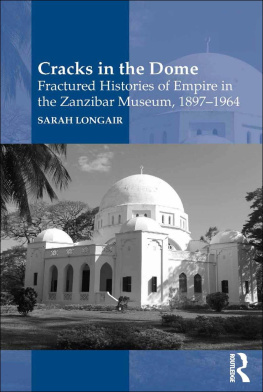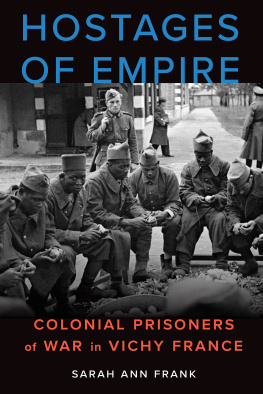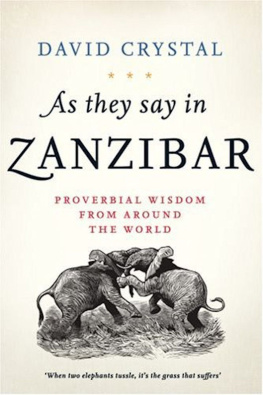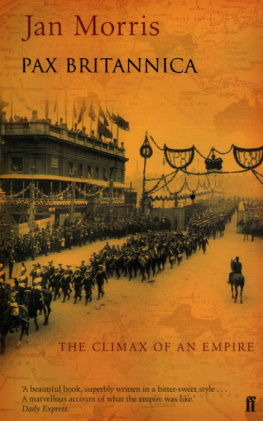CRACKS IN THE DOME: FRACTURED HISTORIES OF EMPIRE IN THE ZANZIBAR MUSEUM, 18971964
As one of the most monumental and recognisable landmarks from Zanzibars years as a British Protectorate, the distinctive domed building of the distinctive domed building of the Zanzibar Museum (also known as the Beit al-Amani or Peace Memorial Museum) is widely known and familiar to Zanzibaris and visitors alike. Yet the complicated and compelling history behind its construction and collection has been overlooked by historians until now. Drawing on a rich and wide range of hitherto unexplored archival, photographic, architectural and material evidence, this book is the first serious investigation of this remarkable institution. Although the museum was not opened until 1925, this book traces the longer history of colonial display which culminated in the establishment of the Zanzibar Museum. It reveals the complexity of colonial knowledge production in the changing political context of the twentieth century British Empire and explores the broad spectrum of people from diverse communities who shaped its existence as staff, informants, collectors and teachers. Through vivid narratives involving people, objects and exhibits, This book exposes the fractures, contradictions and tensions in creating and maintaining a colonial museum, and casts light on the conflicted character of the colonial mission in eastern Africa.
Sarah Longair received her PhD from Birkbeck, University of London, and currently works in the Department of Africa, Oceania and the Americas at the British Museum. Her research explores British colonial history in East Africa and the Indian Ocean world through material and visual culture. She has published several book chapters and articles, and has co-edited the volume Curating Empire: Museums and the British Imperial Experience (2012) and two special issues of the Museums History Journal.
For Deborah and Malcolm
Cracks in the Dome: Fractured Histories of Empire in the Zanzibar Museum, 18971964
Sarah Longair
First published 2015 by Ashgate Publishing
Published 2016 by Routledge
2 Park Square, Milton Park, Abingdon, Oxon OX14 4RN
711 Third Avenue, New York, NY 10017, USA
Routledge is an imprint of the Taylor & Francis Group, an informa business
Copyright Sarah Longair 2015
Sarah Longair has asserted her right under the Copyright, Designs and Patents Act, 1988, to be identified as the author of this work.
All rights reserved. No part of this book may be reprinted or reproduced or utilised in any form or by any electronic, mechanical, or other means, now known or hereafter invented, including photocopying and recording, or in any information storage or retrieval system, without permission in writing from the publishers.
Notice:
Product or corporate names may be trademarks or registered trademarks, and are used only for identification and explanation without intent to infringe.
British Library Cataloguing in Publication Data
A catalogue record for this book is available from the British Library
The Library of Congress has cataloged the printed edition as follows:
Longair, Sarah, author.
Cracks in the Dome: Fractured Histories of Empire in the Zanzibar Museum, 18971964 / by Sarah Longair.
pages cm
Includes bibliographical references and index.
1. Peace Memorial Museum (Zanzibar) History. 2. Historical museums
Tanzania Zanzibar History. 3. Historic buildings Tanzania Zanzibar.
4. Collectors and collecting Tanzania Zanzibar. 5. Zanzibar History
18901964. I. Title.
DT449.Z28L66 2015
967.8103074dc23Q
2014048291
ISBN: 9781472437877 (hbk)
ISBN: 9781315574523 (ebk-PDF)
ISBN: 9781317158769 (ebk-ePUB)
Contents
List of Figures and Table
Photographs authors own unless indicated.
Table
Acknowledgements
Firstly, I would like to thank the staff of the many institutions where I have undertaken research throughout this project. In the Zanzibar National Archives, Himidi Omar and his colleagues were tireless in providing me with material during several visits, including a long period of six months in 2009 when I visited daily. Khamis Ali and Maneno Khamis at the House of Wonders (the Zanzibar National Museum) took me on several occasions to the stores of that museum and the original Zanzibar Museum enabling me to study the remnants of the displays. I was fortunate that during my long visit in 2009 to use the Z.I.O.R.I. library, set up by Prof Abdul Sheriff, now sadly closed. The staff there, especially Saleh Mohammed Saleh, were welcoming and helpful, and I appreciated the opportunity to give a lecture to students and scholars there and hear their responses. Friends in Zanzibar have given great encouragement and kind hospitality as well as insights into the local history. I would also like to thank Dr Kiprop Lagat and colleagues in the National Museums of Kenya, and the staff of other museums and institutions in East Africa: the National Museum of Tanzania, the Kenya National Archives, National Museums of Kenya, the Stoneham Museum and the Uganda Museum.
In the United Kingdom, I have explored many of the rich archival resources across the country and been aided by the expertise of archivists: Anne Thomson at Newnham College Archives and Imogen Gunn at the Cambridge Museum of Archaeology and Anthropology who were integral in recovering the story of Ailsa Nicol Smith; Lucy McCann for her intimate knowledge of the African history archives at Rhodes House Library, University of Oxford; Joy Wheeler at the Royal Geographical Society who showed me W. H. Ingramss lantern slides; James Hammill and Sovati Smith in the Anthropology Library and Research Centre at the British Museum for ongoing support; and the staffs of the National Archives, Kew, the Cambridge University Library, the National Library of Scotland and the British Library, in the latter, particularly those who repeatedly assisted me with the microfilm reader for examining early copies of the Zanzibar Gazette.
The research in East Africa was made possible thanks to the UK Arts and Humanities Research Council, Birkbeck, University of London, the British Museum and the British Institute of Eastern Africa. I am especially grateful for these grants as I recognise the value of sustained time in overseas archives for this project.
This book has emerged from my doctoral thesis, which I undertook part-time over five years at Birkbeck, while working at the British Museum. My sincerest appreciation goes to my supervisors, Hilary Sapire and Annie Coombes, who guided me intellectually through the research and writing process. Their insights, care and enthusiasm made that period an extremely stimulating and enjoyable experience. Comments on the thesis from my examiners, Felix Driver and David Anderson, have been essential in developing the work and expanding it into this volume. I also would like to thank the anonymous readers for helping to guide the manuscript into its final state.
I have been fortunate to work with the excellent team at Ashgate, with thanks to my editor Emily Yates for her sound advice and work on the book. Portions of this research have appeared in expanded forms in different publications, including the









